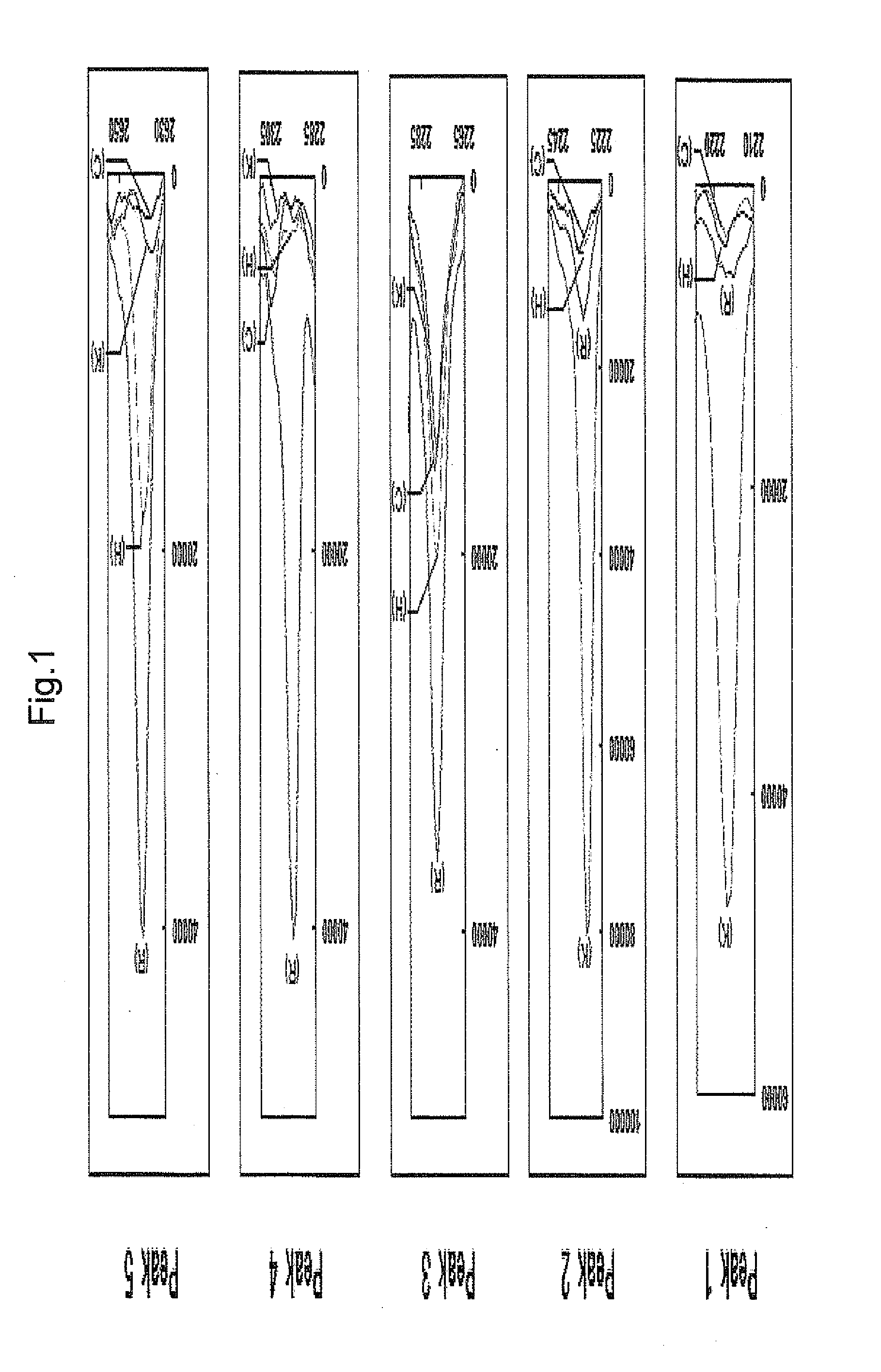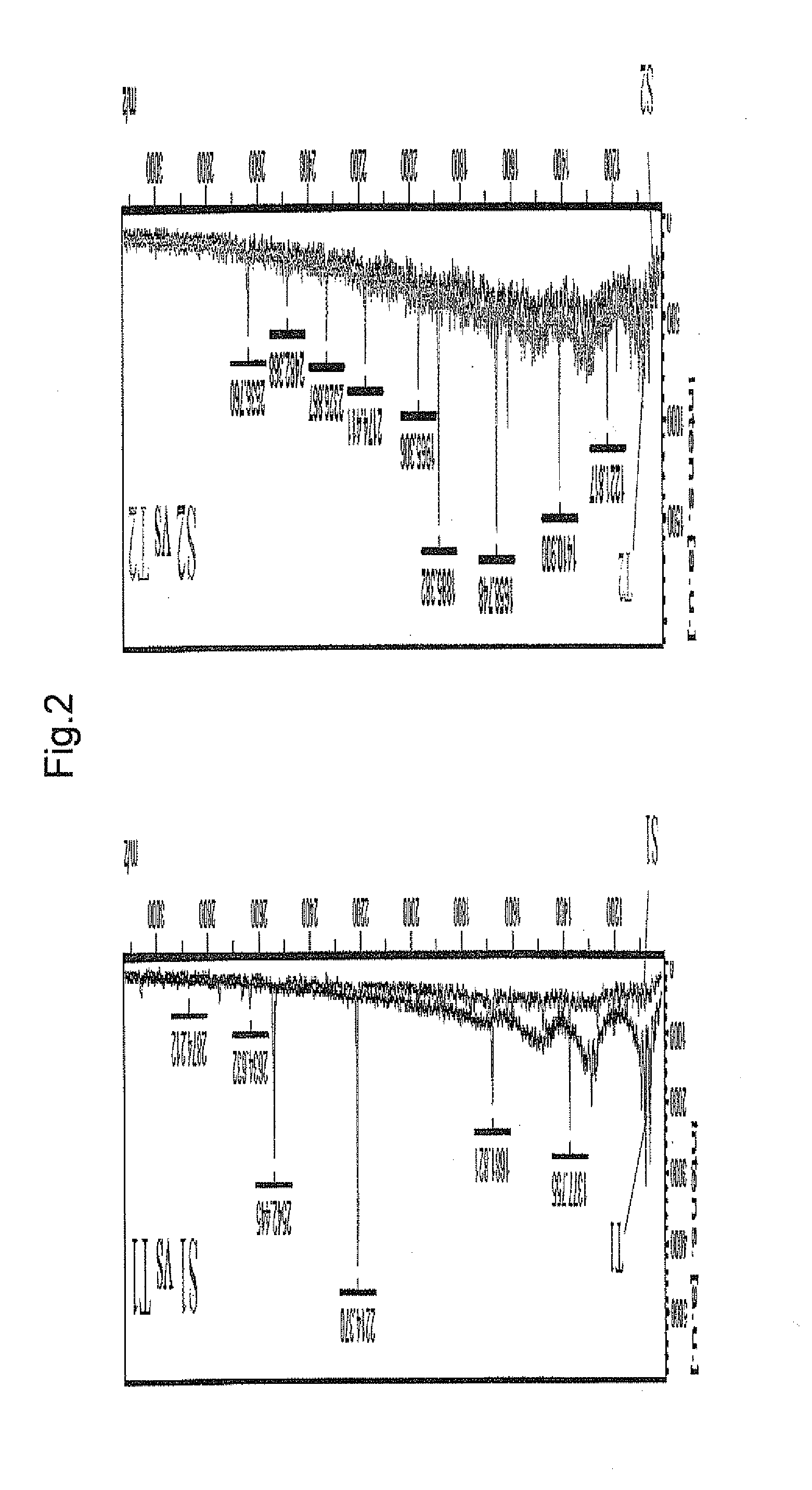Periodontal-disease-specific peptide, and treatment and diagnosis of periodontal disease using same
a periodontal disease and disease-specific technology, applied in the field of periodontal disease-specific peptides, can solve the problems of insufficient information, inability to determine whether or not the target protein of gingival epithelium is involved in the onset or aggravation of periodontal diseases, and the concurrence of systemic complications has not been elucidated. , to achieve the effect of inhibiting the activation of t cells, suppressing the production of autoantibody, and preventing the anti-toxin
- Summary
- Abstract
- Description
- Claims
- Application Information
AI Technical Summary
Benefits of technology
Problems solved by technology
Method used
Image
Examples
example 1
Analysis of Periodontal Bacterial Enzymatic Degradation Product Derived from Rat Gingival Epithelial Cell (GEC)
[0204]Primary gingival epithelial cells (GEC; 6.4×106 cells) scraped from a rat were rinsed twice with phosphate buffered saline (PBS). The cells were divided into 4 groups (no treatment, Kgp treatment, RgpB treatment, HRgpA treatment). Three kinds of purified gingipains were respectively added thereto, and the mixtures were incubated at 37° C. for 1 hr. After completion of incubation, each treatment solution (1.5 μL) was mixed with a sample treatment solution for electrophoresis (NuPAGE (registered trade mark) LDS Sample Buffer 4×; Invitrogen, 4.5 mL), and the mixture was heat-treated at 70° C. for 10 min, and applied to 4-12% gradient polyacrylamide gel (Invitorigen) to perform electrophoresis. After completion of electrophoresis, the gel was cut out, laminated on BLOTCHIP (registered trade mark, Protosera, Inc.), and transcribed in a buffer for electric transcription (BL...
example 2
Identification of Periodontal Bacterial Enzymatic Degradation Product Derived from GEC
[0206]For identification, matrix-assisted laser desorption ionization time-of-flight (MALDI-TOF) mass spectrometer (UltraFlexII manufactured by Bruker Daltnics) was used, and mass calibration was performed using Bradykinin, Angiotensin II, Angiotensin I, Substance 9, Bombesin, Renin Substrate, ACTH Clip{1-17}, ACTH Clip{18-39}, and Somatostatin. Thereafter, profiling was performed on the refrectron measurement mode, and identification was performed by MS / MS analysis based on the selected peptide peak and fragment ion thereof by matching with NCBInr and SwissProt database through MASCOT search engine installed in Biotools (Bruker Daltonik GmbH).
[0207]As a result, peptides of peak Nos. 1, 2, 3 and 5 (to be referred to as peptides 1, 2, 3 and 5, respectively) were identified as peptides consisting of the amino acid sequences shown by SEQ ID NOs: 1, 15, 2 and 3, respectively. The peptide of peak No. 4 ...
example 3
On Spot Profiling and Identification of Periodontal Bacterial Enzymatic Degradation Product of Keratin
[0208]To identify further periodontal bacterial enzymatic degradation product derived from keratin, on spot profiling was performed. Human Keratin 6 and Keratin 17 were treated with purified gingipain (Kgp for Keratin 6, RgpB for Keratin 17) in the same manner as in Example 1, and profiling of the enzymatic degradation product was performed by mass spectrometry in the same manner as in Example 1. The results are shown in FIG. 2. Besides peptide 1 identified in Example 2 (Kgp degradation product of Keratin 6) and peptide 5 (RgpB / HRgpA degradation product of Keratin 17), plural peaks of degradation products were detected.
[0209]In the same manner as in Example 2, the detected peaks were identified. As a result, peptides consisting of the amino acid sequences shown by SEQ ID NOs: 4 and 5 (peptides 6 and 7) were newly identified as Kgp degradation products of human Keratin 6, and peptide...
PUM
| Property | Measurement | Unit |
|---|---|---|
| diameter | aaaaa | aaaaa |
| molecular weight | aaaaa | aaaaa |
| weight ratio | aaaaa | aaaaa |
Abstract
Description
Claims
Application Information
 Login to View More
Login to View More - R&D
- Intellectual Property
- Life Sciences
- Materials
- Tech Scout
- Unparalleled Data Quality
- Higher Quality Content
- 60% Fewer Hallucinations
Browse by: Latest US Patents, China's latest patents, Technical Efficacy Thesaurus, Application Domain, Technology Topic, Popular Technical Reports.
© 2025 PatSnap. All rights reserved.Legal|Privacy policy|Modern Slavery Act Transparency Statement|Sitemap|About US| Contact US: help@patsnap.com



